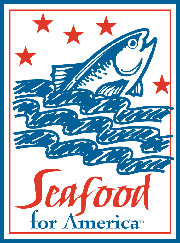

 |
 |
We usually try to devote each FishNet to a single subject. In this edition we find it useful to cover a number of topics in somewhat less detail. Where possible we will expand on these particular areas at the NJ Fishing website and suggest that if you are looking for more in-depth material you start there.
Are habitat issues finally getting their due?
 |
As those of you who have been reading NJ FishNet since its inception are aware, it’s our feeling that there are many factors impacting on fish stocks that are of possibly equal or greater significance than fishing pressure. Perhaps it’s because of all of the attention that the dramatic - and sometimes tragic - El Nino-related effects have generated, perhaps the high visibility of such vivid examples of habitat deterioration as last year’s Pfiesteria outbreaks or the Gulf of Mexico’s Dead Zone (see box below), perhaps just that our way of looking at estuarine, coastal and oceanic systems is evolving. Whatever the reasons, we’ve been very pleased to see that in the past several months these non-fishing impacts have been given much more attention than they have been in the past. (See the following discussion on ecosystem management) |
“Risk-Averse” Fisheries Management
Over the past several years some fisheries managers have been promoting management strategies that are termed “risk averse.” The underlying philosophy is that, when uncertainty exists about either the initial condition of the fishery being managed or the effects that the management measures will have on the condition of the fishery, the management measures put in place should be designed to minimize the impacts of fishing on the fish. In essence, the fish being managed are assumed to be much less able to withstand fishing pressure than the fishing businesses are able to withstand the economic penalties that overly-restrictive management measures would bring.
At first glance this seems like a reasonable approach, particularly considering the way in which the risk-averse measures are usually presented. A 20% reduction in the commercial harvest of a particular species might be proposed rather than a “riskier” 10% reduction. The supporters of such a management philosophy, people almost always working for a regular paycheck, equate this to a cut in pay to the affected fishermen, and the difference between a 20% and 10% pay cut isn’t all that great, especially if it’s someone else’s pay getting cut.
But is that the way the affected fisherman or dock operator or wholesaler sees it? Of course not. His or her operating expenses are high and for the most part fixed. The mortgage on the boat, the insurance, the fuel, the amount of wear and tear on the equipment and other expenses don’t diminish as the allowable catch does. A seemingly small reduction in what a fisherman is allowed to catch usually means a much larger reduction in his or her take-home pay and a much greater impact on the viability of his or her business.
This, of course, would have to be acceptable if the fisheries being managed were as threatened as some of the groups committed to “saving the oceans” would have us believe (or if we were reasonably certain that it was fishing pressure that was “driving” our estuarine, coastal and open ocean ecosystems). But their crisis-oriented rhetoric totally ignores the fact that commercial fishing in our coastal and ocean waters has only been restrictively managed for the last ten or fifteen years, that prior to that there were few controls on how, when or where a fisherman could work, that twenty years ago foreign fleets of distant water catcher/processors were intensively fishing with no restrictions a “cannon shot” beyond our beaches, and that our fisheries survived all of that.
To suggest that today’s commercial fishermen, with the gear, area, time,
size and quota restrictions they are complying with, could have an impact
greater than that inflicted on the stocks in the past seems at best disingenuous.
It’s obvious that the fish stocks are capable of surviving much more fishing
pressure than that of today’s highly regulated commercial fleets. It’s
questionable how many of the small businesses that make up our commercial
fishing industry can absorb much more risk-averse management. Once these
businesses are lost, for a myriad of reasons they will probably not be
replaced.
The case for Ecosystyem Management
There has been a growing movement in some scientific circles to adopt a more “holistic” approach to living marine resource management. Several years ago, when this movement began to receive some notice, it was termed “Ecosystem Management” and was unfortunately taken by some members of the fisheries management establishment as a threat to what has become the accepted way of managing fisheries - managing fishing effort and ignoring other equally or possibly more relevant factors.
While we plan on devoting an entire FishNet to this subject in the near
future, we would like to direct your attention to the article on it that
was part of the New Orleans Times-Picayune’s award winning series on the
state of the world’s fisheries that is available at both the Pulitzer [![]() ]
and Sigma Delta Chi websites [
]
and Sigma Delta Chi websites [![]() ].
].
| "Ecosystem scientists argue for a shift away from just managing fishing toward a more comprehensive approach taking into account habitat, current flow and interactions with other species. But the new approaches face many obstacles. Scientists violently disagree, for example, on the role of chaotic changes in fish populations. Many fishery scientists say any chaotic changes will almost always be impossible to separate from other factors that aren’t chaotic. And while agencies such as the National Marine Fisheries Service employ new techniques as they can, they must function in an era when government is shrinking — not expanding its mandates across entire ecosystems. ‘‘One reason fish management spends a lot of effort on controlling fishing is that’s what the law allows fish managers to control. That has the most immediate impact, and that’s what the public is most concerned about,’’ said Bradford Brown, director of the Southeast Regional Science Center of the Fisheries Service, who is also an expert on ecosystem modeling. But the biggest problem is history. Institutions are set up and budgets are determined the way they are because agencies have been doing it that way for decades, not because their approaches are the best." (from Bold new ‘chaos theory’ says fishery experts way off track by John McQuaid from Oceans Of Trouble - Day 8 of 8 Copyright 1996 by the Times - Picayune, New Orleans, LA) |
This focused political pressure continues to be the reason that well over seven million non-fishing consumers in New Jersey are by law denied the right to enjoy the ocean-fresh striped bass that are so abundant today in our coastal waters. New Jersey legislator’s have demonstrated a willingness to ignore the rights of the non-fishing majority of their constituents to grant the total harvest of striped bass to a small but vocal handful of sportsfishermen. Emboldened by this and self-righteously proclaiming their agenda is motivated by conservation rather than a desire for the exclusive use of our coastal waters for their entertainment, recreational fishing groups are now intent on using the legislative process to bypass the management system in other fisheries as well.
As we’ve stated in these pages before, sportsfishing is a large and important segment of the coastal economy in New Jersey. We in the commercial fishing industry recognize that the businesses that provide the recreational opportunities to those citizens who chose to catch their own fish are facing many of the same challenges that we are. We have not suggested - either through the management process or through our elected representatives in Trenton or Washington - that the non-fishing majority that we serve has any greater claim to the fish or shellfish from our rich coastal waters than the sportsfishermen and women do. But, by the same token, we can’t agree that the sportsfishing community is exclusively entitled to entire species of fish simply because they chose to - or can afford to - invest the time, effort and money into catching those fish themselves.
In the commercial fishing industry we’ve made a commitment to strengthening
the fisheries management process. That’s where our future lies. It’s unfortunate
that some of our sportsfishing colleagues with the help of a few legislators
would rather circumvent that system than improve it. Our fisheries resources
and the non-fishing public deserve much more.
